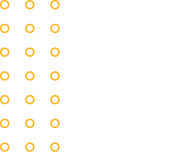L’Oréal – AI powered digital automation
Wavemaker
for
L'Oréal
Kategori :
Type :
andet


This is the story about how L’Oréal and Wavemaker built and implemented the Artificial Intelligence Tidal which has automated social buying, increased media investment efficiency by more than 20% and challenged the organisation to increase flexibility and create even higher returns.
In recent years, L’Oréal’s sales through ecommerce partners have increased by more than 75%. The year 2020 has accelerated this development. L’Oréal has always been exceptional at retailer relationships, trade promotions and securing shelf space in physical stores, but with the massive move towards online commerce, the world and the challenges have changed. Parallel to this development, L’Oréal has seen a shift in the media consumption of their key target groups. From TV being number one, target groups and media investments are moving towards social media platforms.
The combination of developments has created a set of challenges that L’Oréal needed to tackle head on:
1. With a multitude of e-commerce partners, old world sales data, from the likes of Nielsen no longer fulfilled the need of tracking online retail revenue
2. The native attribution models of Facebook and Google does not deliver the needed detail and application that L’Oréal’s continuous increase in media investment warranted
3. L’Oréal needed a new way of evaluating their sales partners ability to convert traffic to sales.
The task was to create a simple, detailed and resource light sales attribution model for 20 brands across the four Nordic markets.
With the given challenges in mind, L’Oréal and Wavemaker formed a taskforce called “Co-Lap” with the goals of:
1) creating a new governance structure for the effectiveness of L’Oréal media investments
2) enabling a higher degree of transparency in the user journey from media impression to sales
3) increase the overall turnover with a better performance.
The initial task for the “Co-Lap” was to frame a possible solution that would be able to answer all the challenges in one combined approach. Wavemaker’s data scientists evaluated if any of the data points within the Facebook universe delivered on the specified challenges. Unfortunately, we didn’t find a solution, but the ability to extract sales data from ecommerce partners on Facebook’s “collaborative ads” turned out to be a central part of our bespoke solution.
With reliable sales data in place, a new world of opportunities opened. The first step was to build “Tidal” a bespoke artificial intelligence that could predict the sales for each of the ecommerce partners across 20 brands and four markets. Tidal was able to build a total of 63 predictive models across the Nordics which gives a detailed and accurate understanding of the effectiveness of the media investments made by L’Oréal through collaborative ads on Facebook. This provides transparency and an understanding of the consumer journey and the partners’ ability to convert traffic to sales on their platforms, which is something that previously had been impossible.
Based on the models which Tidal created, it was possible to estimate the incremental sales generated by paid social at every possible investment level for each brand in each market. Through this knowledge, Tidal was able to identify campaigns that were overspending and not generating enough sales and, conversely, campaigns that were underspending where there was potential to increase investments.
As time passed and Tidal was exposed to more and more campaigns and sales data, it became increasingly better at predicting the outcome of campaigns and to optimise future campaigns even before they come live.
Today, Tidal is working around the clock to increase the efficiency of every single media investment and is even challenging the way our organisation is structured to create a higher degree of agility in budget allocation across brands and markets. Tidal is also working every day to reallocate campaign budgets between days to implement the macro/micro seasonality insights gained from the 63 models, thereby implementing intelligent pacing across all campaigns.
This - in time - will allow for even better efficiency than what is presented below.
Tidal has forever changed the way L’Oréal and Wavemaker runs and optimises Facebook campaigns. Budgets are more flexible and invested where the returns are the highest in terms of brand, country, reseller and timing.
The results are far better than ever expected. An average increase of media efficiency of 22% across brands and markets means that L’Oréal today gets 22% more out of their media investment thanks to Wavemaker and Tidal. This covers a 14% increase in effectiveness due to Tidal’s ability to optimise investments between brands and markets, moving investments to where the returns are the highest and an 8% increase in efficiency because Tidal always works on micro-optimising budget allocations 24 hours a day, 7 days a week, ensuring that investments are made when returns are peaking.
“In recent years, a primary focus of L’Oréal has been digital transformation and accelerating our digital sales. The Tidal project helps us to gain a much better understanding of social media’s ability to drive sales, our ecommerce partners, and their ability to turn the web traffic L’Oréal delivers into sales, and most important, it delivers significant increases in revenue from our marketing investments through the automated buying setup developed by Wavemaker. Thus far, Tidal has increased our media ROI by an incredible 22%.” Nick Buckley, Chief Marketing Officer, L’Oréal Nordics